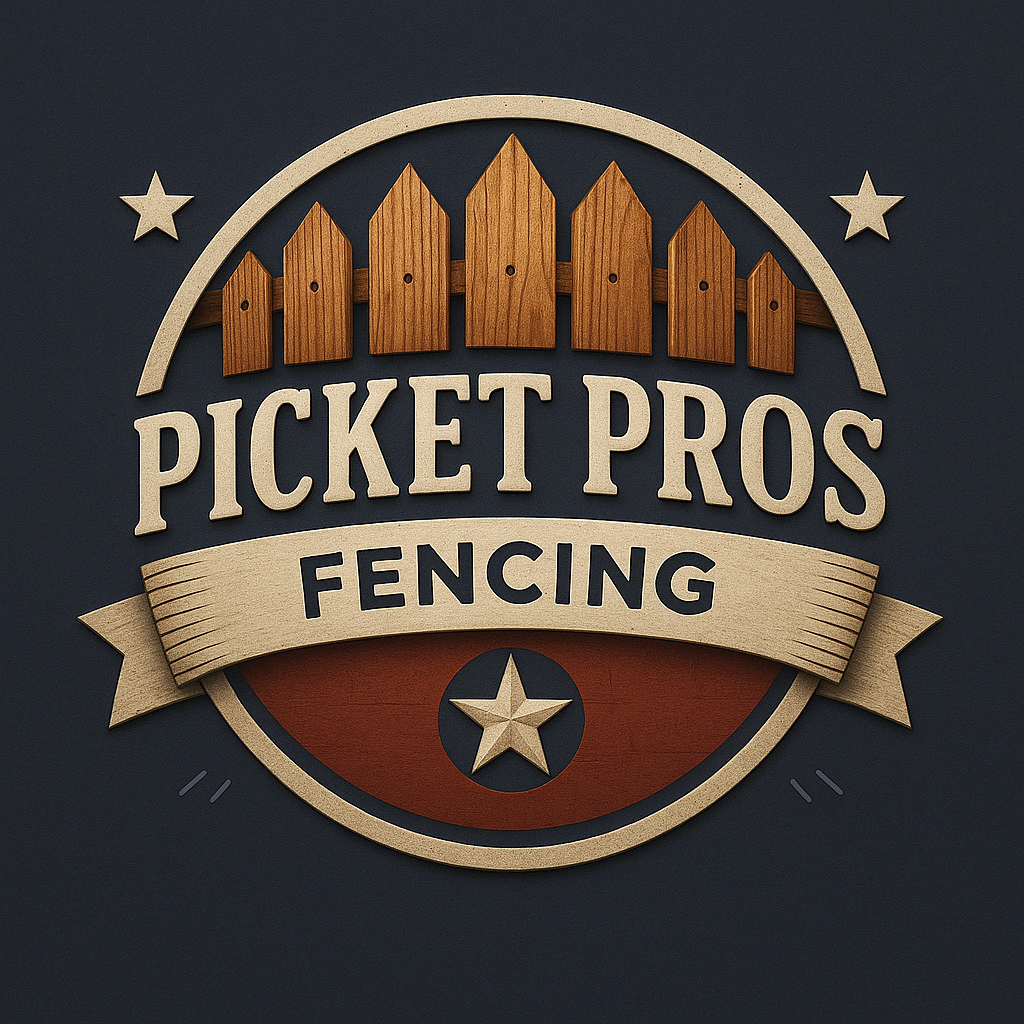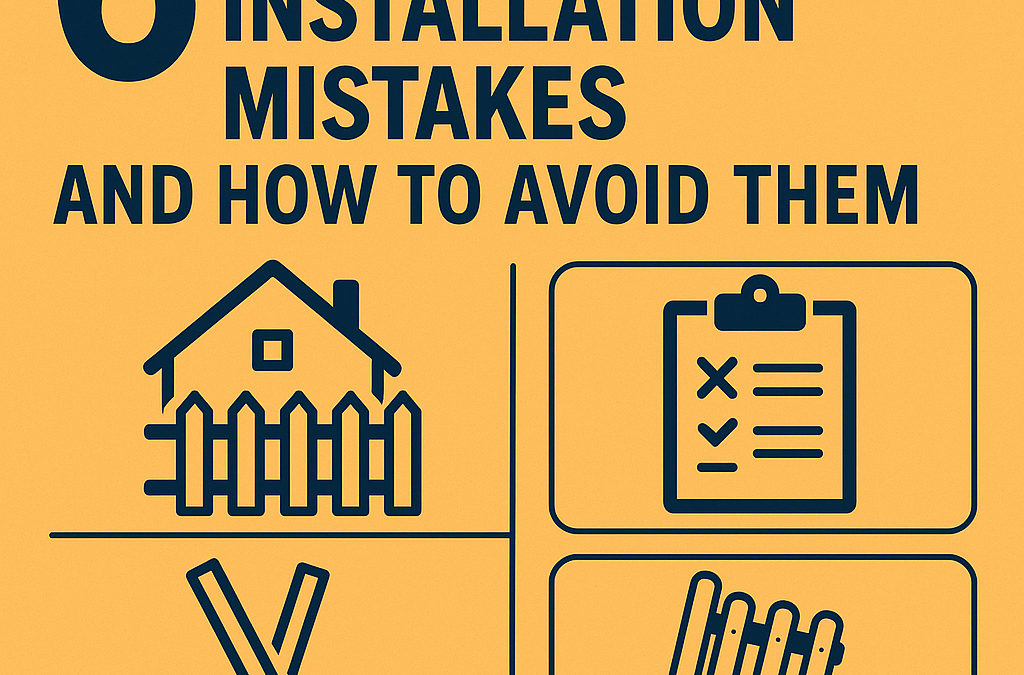6 Common Fence Installation Mistakes and How to Avoid Them
Thinking of installing a new fence? Read this first. At Picket Pros, we’ve installed thousands of feet of fencing across the Kansas City metro. While fencing seems straightforward, many homeowners (and even some contractors) make avoidable mistakes that lead to sagging sections, premature repairs, or disputes with neighbors. Let’s break down the six most common fence installation mistakes—and how you can avoid them.

Ready to Get a Fence That’s Built to Last?
We specialize in professional wood and vinyl fence installation in Olathe, Overland Park, Shawnee, Lenexa, Kansas City, and surrounding areas.
📞 Call us at 913-358-5305 or get a free quote at PicketPros.com.
1. Not Checking Local Fence Codes and Permit Requirements
🚫 The Mistake:
Many DIYers (and some contractors) skip city permit requirements or local zoning laws entirely, risking fines, stop-work orders, or being forced to tear down a finished fence.
✅ How to Avoid It:
Always check your city’s fencing codes. In cities like Overland Park, you often need to submit a plot plan and ensure your design adheres to height, material, and setback requirements. Rules vary based on corner lots, properties with pools, or shared neighbor lines.
Tip: Call 811 before digging to avoid underground utilities—it’s the law.
👉 Need help? We handle permit filing for our clients in Johnson County, including Olathe, Shawnee, Lenexa, and KC.
2. Using Improper or Low-Quality Posts
🚫 The Mistake:
Your fence is only as strong as its posts. Using untreated wood posts in wet soil or failing to set posts deep enough causes lean and instability.
✅ How to Avoid It:
At Picket Pros, we install posts at least 24–30 inches deep in concrete, getting close to, or below the frost line. We often recommend steel posts—especially PostMaster+ and Lifetime—for added strength and rot resistance.
Wood posts should always be pressure-treated or cedar and sealed properly. Never use untreated lumber.
👉 Learn more about why steel fence posts outperform wood.
3. Ignoring Slope and Terrain Challenges
🚫 The Mistake:
Trying to install a fence in a straight line across sloped land without accounting for grade changes can leave unsightly gaps or uneven pickets.
✅ How to Avoid It:
There are two primary solutions for sloped lots:
Stepped fencing: Individual panels are installed horizontally with height changes at each post.
Racked fencing: Panels follow the ground’s contour for a smooth transition.
Picket Pros inspects every job site beforehand to determine the right solution. A poorly installed slope fence won’t just look bad—it can reduce privacy and let pets escape.
4. Inaccurate Post Spacing and Measurements
🚫 The Mistake:
Guessing your measurements or not double-checking spacing can leave you with misaligned panels, gates that don’t close properly, and an overall amateur look.
✅ How to Avoid It:
Always measure twice and mark post positions with string lines and spray paint before digging. Standard wood fence panels are typically 6 to 8 feet wide—but exact spacing depends on style and material.
Pro Tip: If using pre-assembled panels, dry-fit your layout before setting posts. It’s far easier to adjust spacing before concrete sets. Remember, pre-assembled panels are NOT as nice as assembled on site for a number of reasons.
5. Skipping Sealing or Staining on Wood Fences
🚫 The Mistake:
Leaving cedar or pine fences untreated makes them vulnerable to moisture, mold, and UV damage—especially in Kansas City’s hot summers and snowy winters.
✅ How to Avoid It:
Apply a stain and sealant within a few months of installation (once wood dries). This locks out moisture and extends the life of your fence by years. Picket Pros offers full fence staining and sealing services to preserve your investment.
Note: Cedar naturally resists rot, but sealing still helps prevent graying and cracking.
6. Poor Gate Installation or Hardware Choices
🚫 The Mistake:
Improperly supported gates are one of the first parts of a fence to sag or fail. Many installs use flimsy hinges or fail to brace the gate properly.
✅ How to Avoid It:
We install gates with:
6×6 gate posts or steel reinforcement for 6 footers.
Diagonal braces for structural support
Heavy-duty hinges and latches
Anti-sag gate kits when needed
👉 Explore our detailed guide on gate hardware and installation tips (optional if you want to create one).
Bonus Mistakes to Watch Out For
🚫 Not Communicating with Neighbors
Always give neighbors a heads-up—especially if the fence runs along a shared line. They may even split the cost!
🚫 Failing to Budget for Add-Ons
Gates, staining, decorative trim, or removal of an old fence all add to the final cost. Request a detailed quote in advance.
Built the Right Way, the First Time.
At Picket Pros, we pride ourselves on craftsmanship and attention to detail. Every fence we install in the Kansas City metro is designed to last—and backed by a commitment to quality that DIY shortcuts can’t match.
📍 Serving:
Olathe • Overland Park • Shawnee • Lenexa • Kansas City • Gardner • and nearby cities.
📞 Call us at 913-358-5305 or request a free quote today at PicketPros.com.
🧠 FAQs
How deep should fence posts be installed in Kansas?
At least 24–30 inches deep, close to below the frost line, and set in concrete for stability.
What’s better: steel or wood posts?
Steel posts last longer and resist rot better than wood. They’re ideal for long-term durability.
Do I need a permit to install a fence?
In most KC-area cities like Gardner or Olathe, no. See our fence permit guide.
Can I install a fence myself?
Yes, but many DIY installs lead to long-term issues. A professional team ensures accuracy, code compliance, and warranty support.
Should I stain my new fence?
Absolutely. Staining extends lifespan and protects against the elements. Learn more about our staining services.

